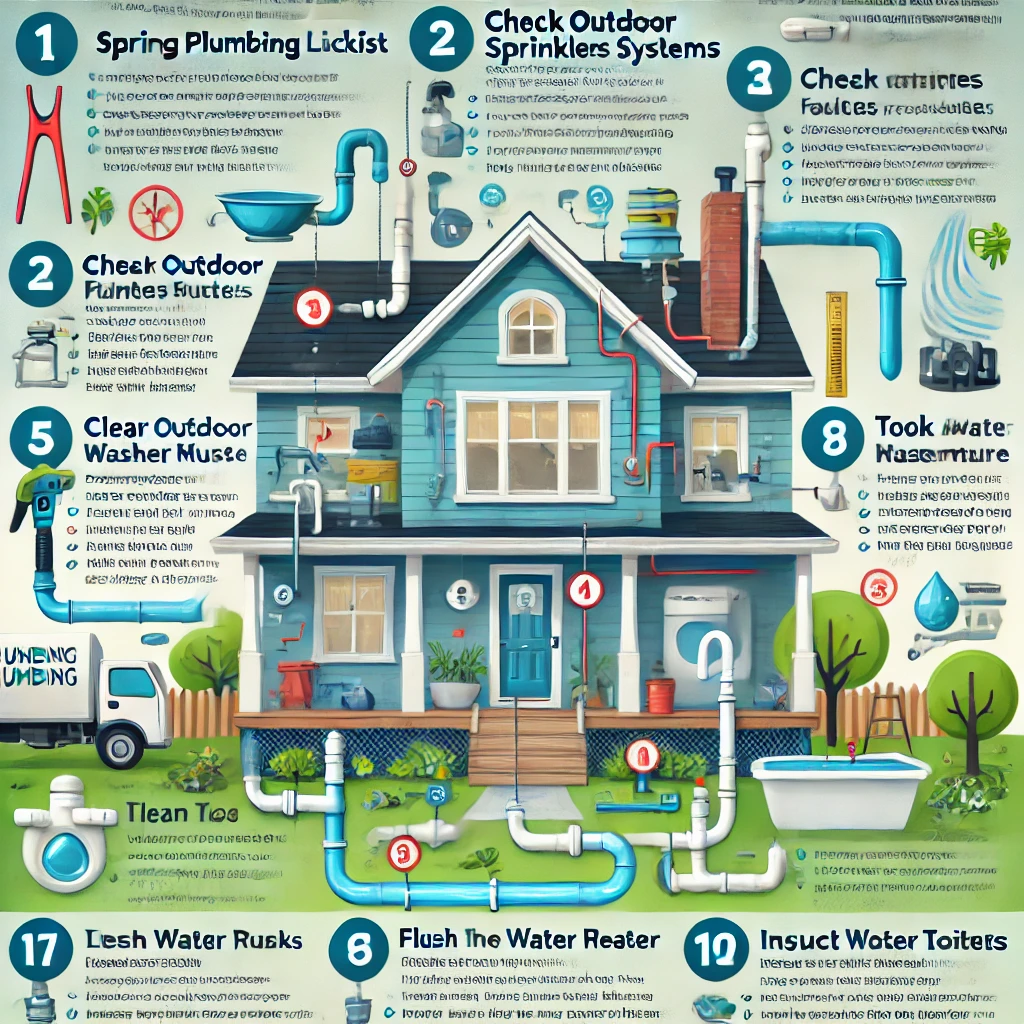As the harsh Saskatchewan winter gives way to the refreshing embrace of spring, homeowners must turn their attention to essential maintenance tasks. One critical area that demands attention is the plumbing system. The freezing temperatures can take a toll on pipes and fixtures, making a thorough inspection and maintenance routine indispensable. This comprehensive guide provides a detailed spring plumbing checklist tailored for Saskatchewan homeowners, ensuring your plumbing system remains in optimal condition throughout the year.
Introduction
Importance of Spring Plumbing Maintenance
Spring is a season of renewal, offering the perfect opportunity for homeowners to assess and maintain their property’s plumbing system. After enduring the severe cold of a Saskatchewan winter, plumbing systems may have suffered from freezing temperatures, leading to potential damage. Proactive maintenance not only ensures the longevity of the system but also prevents costly repairs down the line.
Impact of Saskatchewan Winters on Plumbing Systems
Saskatchewan’s winters are notorious for their extreme cold, which can cause pipes to freeze and burst. The freeze-thaw cycle can lead to cracks in pipes, compromised seals, and other issues that may not be immediately apparent. As temperatures rise in spring, these problems can manifest, making early detection and repair crucial.
Inspecting Indoor Plumbing
Checking for Leaks
Begin your inspection by examining all visible pipes, especially in basements, crawl spaces, and under sinks. Look for signs of moisture, corrosion, or pooling water. Even minor leaks can escalate into significant problems if left unaddressed.
Examining Pipe Insulation
Proper insulation is vital to prevent pipes from freezing during winter. Ensure that existing insulation is intact and consider adding insulation to pipes in unheated areas. This not only protects against future freezes but also improves energy efficiency.
Testing Water Pressure
Low water pressure can indicate underlying issues such as pipe blockages or leaks. Use a water pressure gauge to test the pressure at various fixtures. If readings are consistently low, it may be time to consult a professional plumber.
Evaluating Water Heater Performance
The water heater works overtime during winter months. Inspect it for signs of rust, corrosion, or leaks. Flushing the tank to remove sediment buildup can enhance efficiency and extend its lifespan. Ensure the thermostat is set to an appropriate temperature, typically around 120°F (49°C), to prevent scalding and reduce energy consumption.
Outdoor Plumbing Assessment
Inspecting Hose Bibs and Faucets
Outdoor faucets are susceptible to freezing. Turn them on to check for proper water flow. If you notice reduced flow or leaks, there may be damage within the pipes leading to the faucet.
Assessing Sprinkler Systems
Before activating your irrigation system, inspect sprinkler heads for damage and ensure the control valves function correctly. Leaks in the system can lead to water waste and increased utility bills.
Cleaning Gutters and Downspouts
Clear gutters and downspouts of debris to ensure proper drainage. Blockages can lead to water overflow, potentially causing foundation damage or basement flooding.
Drainage System Maintenance
Clearing Clogged Drains
Slow or clogged drains can indicate blockages within the plumbing system. Use a drain snake or enzymatic cleaner to clear minor clogs. Persistent issues may require professional attention.
Inspecting Sewer Lines
Tree roots can infiltrate sewer lines, causing blockages or leaks. If you experience frequent drain backups, a sewer line inspection using a camera can identify the problem’s source.
Maintaining Sump Pumps
Sump pumps prevent basement flooding by removing accumulated water. Test the pump by pouring water into the sump pit to ensure it activates correctly. Consider installing a battery backup system to keep the pump operational during power outages.
Preventative Measures
Installing Backflow Preventers
Backflow preventers protect your home’s water supply from contamination. If not already installed, consult a plumber about adding them to your system.
Upgrading to Frost-Free Hose Bibs
Frost-free hose bibs are designed to prevent freezing and are a worthwhile investment for Saskatchewan homeowners. They extend the shut-off valve inside the house, where temperatures are warmer, reducing the risk of frozen pipes.
Scheduling Professional Plumbing Inspections
While DIY inspections are beneficial, a professional plumber can identify issues that may go unnoticed. Annual inspections can catch potential problems early, saving you time and money.
Energy Efficiency Considerations
Insulating Hot Water Pipes
Insulating hot water pipes reduces heat loss, allowing water to arrive hotter at the faucet and reducing energy consumption. This is especially beneficial in colder climates.
Evaluating Water Heater Settings
Ensure your water heater is set to an efficient temperature. Lowering the thermostat can save energy and reduce utility bills without sacrificing comfort.
Considering Low-Flow Fixtures
Installing low-flow faucets and showerheads conserves water and reduces strain on your plumbing system. These fixtures are designed to maintain pressure while using less water.
Emergency Preparedness
Locating Main Water Shut-Off Valve
In the event of a major leak, knowing the location of your home’s main water shut-off valve is crucial. Ensure all household members are familiar with its location and operation.
Assembling a Plumbing Emergency Kit
Prepare a kit containing essential tools such as a pipe wrench, plumber’s tape, and a plunger. Having these items on hand can mitigate damage during a plumbing emergency.
Establishing a Relationship with a Local Plumber
Building a rapport with a trusted local plumber ensures prompt assistance when issues arise. Regular maintenance visits can also help familiarize the plumber with your system, facilitating quicker diagnostics and repairs.


